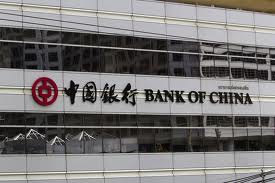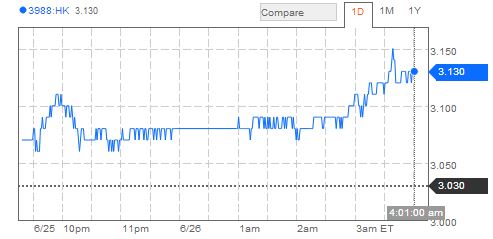Category: Financial System
Financial System
Continue Reading Major Chinese Banks Stop Lending
“Time Is Running Out Fast” For Italy
“Time is running out fast,” said Mediobanca’s top analyst, Antonio Guglielmi, in a confidential client note. “The Italian macro situation has not improved over the last quarter, rather the contrary. Some 160 large corporates in Italy are now in special crisis administration.”The report warned that Italy will “inevitably end up in an EU bail-out request” over the next six months, unless it can count on low borrowing costs and a broader recovery.Emphasising the gravity of the situation, it compared the crisis with when the country was blown out of the Exchange Rate Mechanism in 1992 despite drastic austerity measures.…“The European Central Bank needs to take very aggressive steps to offset this,” said Marchel Alexandrovich from Jefferies Fixed Income. “We have a sell-off across the board. If the ECB doesn’t act, it could see all the gains of the past nine months vanish in two weeks, taking the eurozone back to square one.”…“We have clear signs in global finance of a generalised meltdown in assets right now.”…Mediobanca said the trigger for a blow-up in Italy could be a bail-out crisis for Slovenia or an ugly turn of events in Argentina, which has close links to Italian business. “Argentina in particular worries us, as a new default seems likely.”Mr Guglielmi said Italy’s industrial output has slumped 25pc from its peak in the past decade, while disposable income has dropped 9pc and house sales have dropped to 1985 levels.The 1992 crisis was defused by a large devaluation, allowing Italy to restore trade competitiveness at a stroke. Mediobanca said: “The euro straitjacket is clearly not providing a similar currency flexibility today. With the lira devaluation Italy managed to inflate debt away, which it cannot do today. It could take more than 10 years to revert to pre-crisis output levels.
http://www.zerohedge.com/news/2013-06-25/time-running-out-fast-italy
Continue ReadingBank Of China Declares Moratorium On Transfers, Online Banking; Counters Inoperable
From Caijing, google translated. We hope the gist of the narrative in Mandarin is far less scary, because if the translation is even remotely accurate, then all hell may be about to break loose in China.From Caijing: Bank of China, Bank of suspens…
Continue ReadingBIS says central banks must stop supporting economy
The Bank for International Settlements (BIS) says banks have done their bit to help economic recovery and governments must do more.The Basel-based organisation – usually dubbed the “central banks’ central bank” says it is time for them to stop pum…
Continue ReadingLiquidation – Stocks, Bonds, Commodities Collapse
The International Monetary Fund is preparing to suspend aid payments to Greece by the end of next month unless eurozone leaders plug a €3bn-€4bn shortfall that has opened up in Greece’s €172bn rescue programme, according to officials involved in management of the bailout.The gap emerged after eurozone central banks refused to roll over Greek bonds they hold, and comes amid signs that even the scaled-back privatisation plan Athens agreed to last year is falling behind schedule.…The shortfall will force eurozone finance ministers to discuss “alternate sources” of funding…But the timing is particularly awkward as Germany is holding parliamentary elections on September 22. In the run-up to polling day Chancellor Angela Merkel will be loath to submit any further aid request to the Bundestag where it would likely be highly controversial.…the IMF has warned EU officials the gap will require it to stop aid payments at the end of July, said a person involved in the discussions.Under its rules, governments must have at least 12 months of financing in place to receive IMF disbursements under a bailout programme. This latest shortfall of €3bn-€4bn means that Greece’s financing needs are only covered up to the end of July 2014.
http://www.zerohedge.com/news/2013-06-20/stocks-plunge-imf-tells-greece-plug-holes-or-it-pulls-plug
Continue ReadingWhat The Recent Surge In Rates Means For Your Home Purchasing Power
Wells Fargo & Co., the largest U.S. mortgage lender, is offering 30-year fixed-rate loans at 4.5 percent, according to its website, up from 4.13 percent on June 18 and 3.88 percent on May 22, when comments by Bernanke to lawmakers and the release of the minutes of the last Fed meeting caused bonds to plummet. Freddie Mac’s survey, which is lagging behind the bond slump because it reflects originator responses through yesterday, showed average rates falling to 3.93 percent this week.
Imminent US real estate market crash
Imminent US real estate market crash
- Lumber is near term low, which usually tracks with homebuilders. Very simple to understand, lumber is still primary material to build houses. Housing recovery built on faith
- Institutional players entered market such as BlackRock and JPMorgan (and many others) now exiting. Smart money getting out of stocks and real estate These new investor buyers have been artificially inflating the market in many areas.
- Fed policy – Fed will stop buying mortgage securities This will drive the cost of financing through the roof.
- Demographic shift, baby boomers retiring and new generation not buying more houses.
- Lack of foreign support – Due to a global tax witch hunt, and a European banking crisis, foreigners who previously supported US market will support to lesser extent
- Job crisis – while unemployment figures officially claim we have a job recovery, companies are laying off workers in record amounts. Unemployed people don’t buy houses. Workers who are laid off may have to sell their house.
- Bond market collapse – For those retirees who keep their money in bonds, with the pending bond market crash they will have less money to pay for their houses.
http://ih.advfn.com/daily/eliteforextraining/1710/imminent-us-real-estate-market-crash
Continue ReadingFed much more upbeat about outlook
Rick Santelli Rages: “What Is Bernanke So Afraid Of?”
The following three minutes of absolute perfection uttered by CNBC’s Rick Santelli is dangerous for anyone living in Kyle Bass’ “intellectually dishonest” alter-world of denial and “unicorns and rainbows” as the Chicagoan goes off on theignor…
Continue Reading



